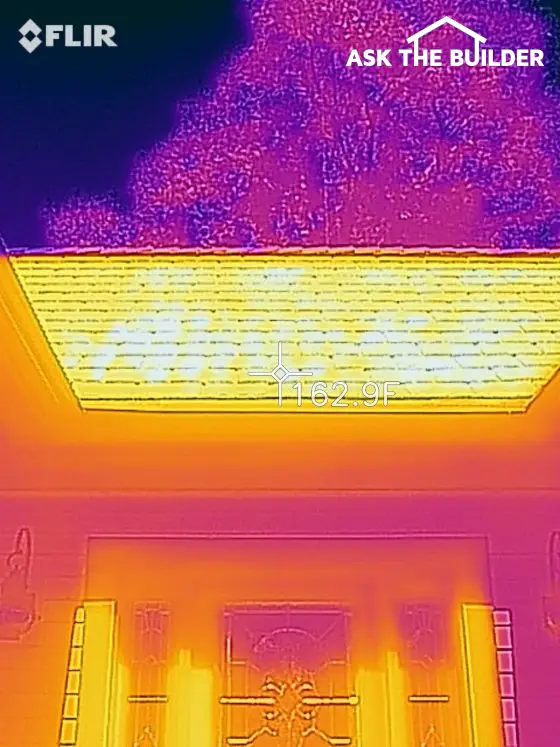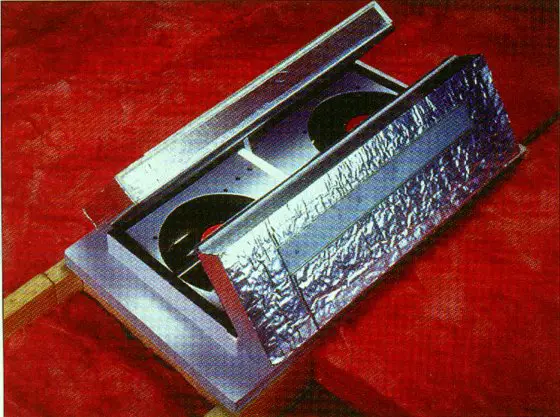Hot Attics and Garages

It’s no wonder your attic is blistering hot. My roof temperature exceeds 162 F and that heat radiates into my attic and then into my home. (C) Copyright 2019 Tim Carter
Hot Garages and Hot Attics - The Truth About Radiant Heat
In just a few weeks my email inbox will begin to overflow. Homeowners just like you will be asking what they can do to cool down their attics, garages, houses, and sheds. After all, the summer solstice is just five weeks away as I pen this column. Here in the Northern Hemisphere this means the sun’s rays have to travel through the least amount of atmosphere to wreak havoc for millions.
I’m sure you’ve experienced the power of the sun’s infrared rays. Just months ago it was still cold here in New Hampshire where I live. Each morning I stand outside with my neighbors watching our dogs play. On clear days in early March the air temperature was below freezing but the sun was high enough in the sky to allow the rays to penetrate through our winter coats. It felt so warm that one might think it was 60 F instead of 22 F.
Have you ever visited any of the islands in the Caribbean Sea? Several years ago I was on the island of Antigua in May. I was there doing expert witness work walking on the roof of the Brazilian Ambassador’s home. I knew to get started at daybreak because the heat would be unbearable. By 7 AM I was soaking wet and not feeling well it was so hot on the roof. The next day I went swimming and at 11 AM standing in the sun the infrared rays were so hot on my skin I felt like I was in a blast furnace. Never before in all the years of me working outdoors in the summer heat had I felt such intense heat on my skin. It was frightening to be honest. I couldn’t get in the shade of a palm tree fast enough.
Here are some facts that will help you understand why it’s so very hard to stay cool in your home when the sun is beating on it like a bass drum. I believe the best example I can offer up is that of a dying campfire.
When the fire is at it’s maximum with the logs burning, the maximum amount of heat is being produced by the fire. This compares roughly with the mid-day heat energy being delivered to your home’s roof by the sun. I’ve measured this heat at my own home using an infrared camera. I get temperature readings in excess of 160 F each time I do this.
This heat is transferred to all of the lumber and timbers that make up my roof. They, in turn, might reach temperatures of 140 F or more. Now, think about that campfire again. Once the flames have died out, you’re left with glowing embers that produce heat for hours. If you’re patient, you know this is the best time to slowly roast marshmallows to a wonderful golden brown.
This same heat is radiated by anything at, or in, your home that was blasted by the sun. I experienced this in a most unusual way about forty years ago. My wife and I were visiting some friends. They had purchased a new brick-veneer home in northern Kentucky. It was a blistering hot summer day.
That evening after the sun had set I had to walk from the rear patio to get something out of our car. I walked past a west-facing brick wall of their home and the heat radiating out the brick was astonishing. It was no different than sitting around the glowing embers of a campfire.
We stayed at their home until just before midnight. Before opening the car door for my lovely young bride, I decided to go back to the side of the house. The brick wall was still sending out low-level infrared heat. I could feel it in the somewhat cool night air!
This same thing is happening at your home. The sun heats up everything the infrared rays hit. Wood, brick, stone, etc. store up this heat and then give it off as night wears on. This is why I find solar attic fans laughable. When you most need them to spin to cool off your home, the fan blades don’t move. Your roof shingles and all the wood creating your roof just radiate all that heat towardsyour living space.
If you want to try to stay cool you need to do what chicken farmers do. Drive past a huge barn that houses chickens and you’ll see something your don’t see on other agricultural barns. Chicken barns have massive fans at each end of the gable roof. They resemble airplane propellers. These huge fans move vast amounts of air through the barn in an attempt to cool down the barn roof structure and everything inside the barn.
If you don’t use an air conditioner, you can also blow more air up into your attic using a whole-house fan. These will help cool down everything in the attic including your entire roof structure.

I prefer old-fashioned wind turbines to do this on houses. Even a slight breeze will cause the turbine to rotate and pull hot air out of a house or garage attic. It’s all about blowing air across hot things like you do to cool a steeping hot spoonful of chili or soup.
Column 1561